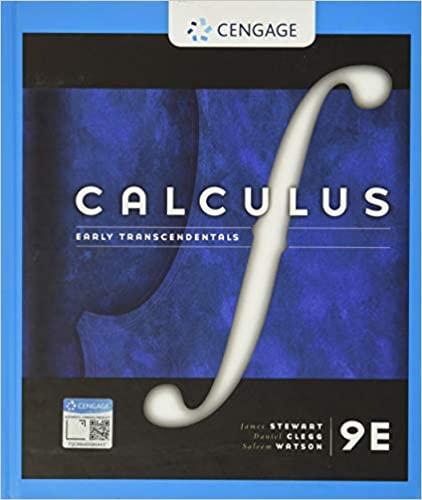Suppose a block of mass m is placed on an inclined plane, as shown in the figure.
Question:
Suppose a block of mass m is placed on an inclined plane, as shown in the figure. The block’s descent down the plane is slowed by friction; if θ is not too large, friction will prevent the block from moving at all. The forces acting on the block are the weight W, where |W| = mg (g is the acceleration due to gravity); the normal force N (the normal component of the reactionary force of the plane on the block), where |N| = n; and the force F due to friction, which acts parallel to the inclined plane, opposing the direction of motion. If the block is at rest and is increased, |F| must also increase until ultimately |F| reaches its maximum, beyond which the block begins to slide. At this angle s , it has been observed that |F| is proportional to n. Thus, when |F| is maximal, we can say that |F| = μsn , where μs is called the coefficient of static friction and depends on the materials that are in contact.
(a) Observe that N + F + W = 0 and deduce that μs = tan θs.
(b) Suppose that, for θ > θs , an additional outside force H is applied to the block, horizontally from the left, and let |H| = h. If h is small, the block may still slide down the plane; if h is large enough, the block will move up the plane. Let hmin be the smallest value of h that allows the block to remain motionless (so that |F| is maximal). By choosing the coordinate axes so that F lies along the x-axis, resolve each force into components parallel and perpendicular to the inclined plane and show that
hmin sinθ + mg cos θ = n and hmin cosθ + μsn = mg sinθ
(c) Show that
hmin = mg tan(θ − μs)
Does this equation seem reasonable? Does it make sense for θ − θs? Does it make sense as θ → 90° ? Explain.
(d) Let hmax be the largest value of h that allows the block to remain motionless. (In which direction is F heading?) Show that
hmax = mg tan(θ + θs)
Does this equation seem reasonable? Explain.
Step by Step Answer:

Calculus Early Transcendentals
ISBN: 9781337613927
9th Edition
Authors: James Stewart, Daniel K. Clegg, Saleem Watson, Lothar Redlin





